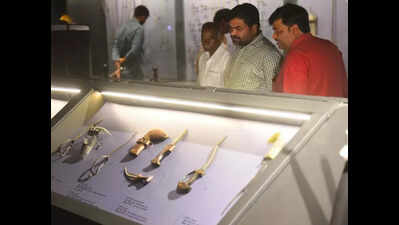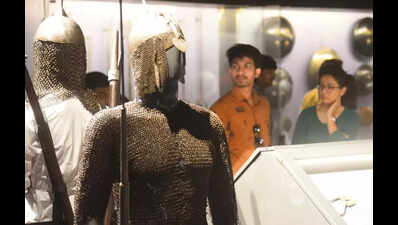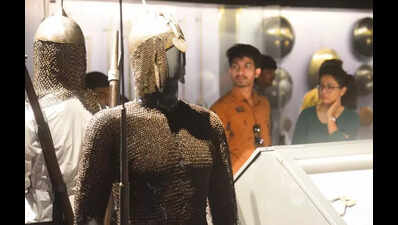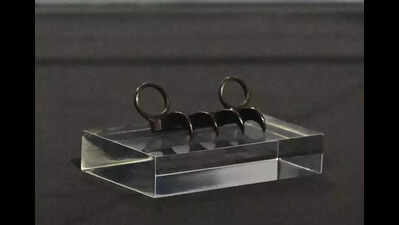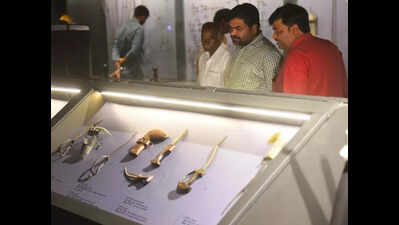- News
- City News
- nagpur News
- Tempering steel 350 years ago: Shivaji’s lethal Wagh Nakh a metallurgy miracle
Trending
Tempering steel 350 years ago: Shivaji’s lethal Wagh Nakh a metallurgy miracle
Nagpur: Steel tempered with clinical perfection by craftsmen three centuries ago made the Wagh Nakh a lethal weapon that left the towering Adilshahi general Afzal Khan disemboweled by Chhatrapati Shivaji Maharaj. A mere 7.5cm-long, weighing 49gm and shaped like a tiger's claws, the Wagh Nakh had the strength of a sword. It may have ripped Khan's abdomen like a knife cutting through butter, says the Nagpur Central Museum's curator, Mayuresh Khadke, who will be its custodian for the next eight months.
It also speaks of the craftsman's mastery during times when metallurgy was still a traditional art, he says. The Wagh Nakh, which came to the Central Museum at Nagpur last week, will be on display for the next eight months. So far, 4,500 people saw the Wagh Nakh amid tight security.
The description sent by the Victoria and Albert Museum, from where it was brought to India, reads — Wagh Nakh is believed to be crafted in the Deccan region. A thick solid metal bar houses four curved razor-sharp claws evenly spaced along the bar at its core. The sharpened edges of the claws enhanced the weapon's lethality. A size difference between the rings indicates the weapon was designed for use in the left hand."
Museum curator Khadke said, "The blue tinge that emerges from quenching hot steel is still visible even after 350 years. The Wagh Nakh left its mark even when kept gently on glass. Imagine the impact it would have when thrust with force."
The curator says it appears the Wagh Nakh may have been specially made for the King himself, which he wore on his left hand. The dimensions may have perfectly matched the size of Maharaj's palm, enabling him to conceal it easily. It cannot fit into anybody else's hand, he said.
The depth of the weapon measured from the top to the end comes to 9.5cm. The two rings made to wear the Wagh Nakh have a diameter of 2.8 and 2.3 cm, matching the size of the first and the little finger of the king, he says. The Wagh Nakh found its way to Britain after the Peshwa gifted it to the British resident of Satara, James Grant Duff. It was later preserved by his descendants. The case in which it was kept has also been brought to India.
BOX BOX BOX
The description at London's Victoria and Albert Museum, which lauds the Wagh Nakh for its strength, errs in historical details. It calls the slain Afzal Khan a Moghul general. However, Khan belonged to the Adil Shahi kingdom, which had its capital in Karnataka's Bijapur town. The inscription on the case in which it was kept in London reads — "The Wagnuck of Shivajiee with which he killed the Moghul General".
Yes, Khan wasn't a Moghul but was sent by the Adil Shahi queen dowager to kill Shivaji, said museum officials. The case in which it was kept is nearly a century old. Maybe the descendants of James Grant Duff, who got the weapon from the Peshwa, made the mistake, said an official.
End of Article
FOLLOW US ON SOCIAL MEDIA
